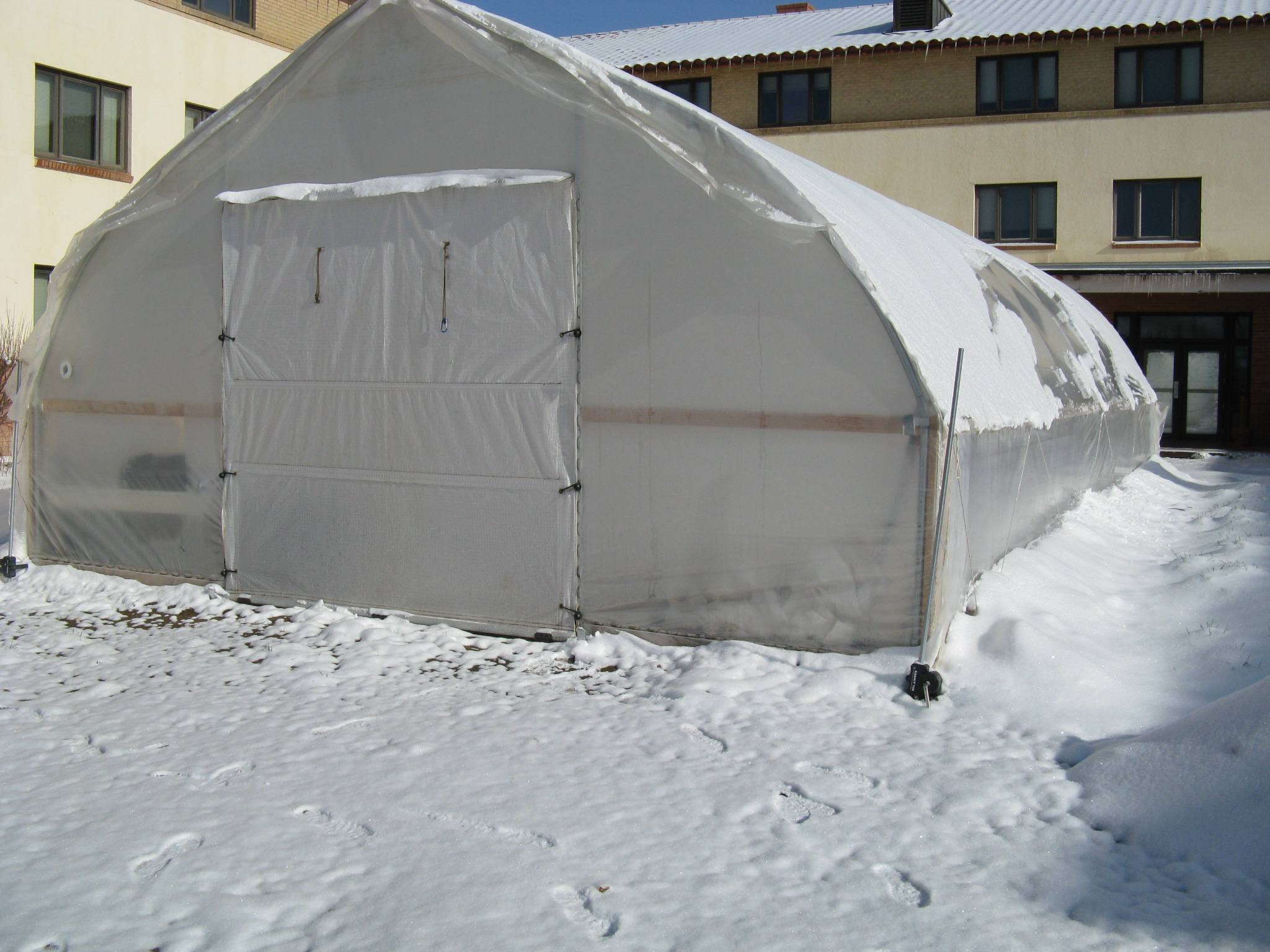
16 Apr ECOACTION PARTNERS: FARM TO TABLE CONFERENCE

Western State Colorado University Hoop House
Last week, I talked about the start of the Gunnison Valley Farm to Table conference held last Tuesday at Western State Colorado University. I am happy to report at the end of the day the conference was a resounding success. One of the best I have ever attended.
Why travel all the way to Gunnison to talk about farm to table? For one thing, the Gunnison Valley may be even more climate-challenged than the Telluride region.
Gunnison sits at 7,700 feet above sea level; nearby Crested Butte is at 8,800. They are a bit colder than we are since they are located in the bottom of a basin where cold air collects. The average January low is -8F degrees while Telluride’s is 16 degrees. That said, the growing season in both places is very short and our similar populations and cultures warrant sharing and learning from one another. And it was great to be part of such a strong event.
Keynote speaker Dawn Thilmany from CSU Extension in Ft. Collins gave us a great start with information on the growth and economics of the local food movement. A strong supporter of local food, Dawn got us all charged up about sharing our stories. I was happy to be on a panel with folks from Mountain Roots, a non-profit that oversees school and community gardens (and much more); the editor of Edible Aspen; a county commissioner; the town manager; and Maya Silver who has spearheaded Local Farms First, an online farm-to-consumer service.
Additional panels had growers and producers: two grass fed beef producers, including Bill Parker from Parker Pastures (you’ll see Laura this summer at their booth at the Telluride Farmers’ Market); a vegetable grower; the local extension agent; and a baker. One thing everyone had in common is the need for stronger connections between growers and consumers and more education of consumers about food systems in general and why cheap food ain’t cheap!
The last panel was fascinating as well. That one included several chefs and restaurant owners, as well as a distiller, and a representative from Sodexo (who provides most of the campus food). It became evident what the chefs want is more local food, the distiller was in agreement, and the food delivery representative was doing quite a bit to make some changes in that business to help support the goal of more local food.
Attendance on the cold and snowy day was good, and we wrapped up with a facilitated roundtable exercise to help come up with next steps for the region. From my point of view it was nice to give advice knowing I would not be called upon to “do the work.” (Plenty of that here in our own region!)
Business was followed by a lovely local food dinner prepped by students with the help of a local sous chef from the Brick Oven. And please note: it is challenging to have a big dinner of local food in early April at nearly 8000 feet! We had Parker Pastures beef, a beautiful salad, roasted veggies, and a lovely apple based dessert to top things off.
Before heading back home on the icy road, I was really keen to see what students on campus have going on. A current and former student showed me around.
We crunched through the snow to a greenhouse constructed on the side of one of the campus buildings. Though not very big, it was a wonderful warm place full of plants including lettuce (most had been harvested for our dinner the night before), a fig, some young tomato and basil plants, and even a small aquaponics unit. They also have a hoop house and student garden tucked into a great sun-catching space between two wings of a dorm. Things were just getting going in the hoop house, but the promise of spring was in the air.
All this comes right back to our own region.
EcoAction Partners is working on bringing a Holistic Resource Management training our way next January to help us all learn how we can restore and revitalize our lands using smart planning and hooves. (Hope you saw Alan Savory’s Ted Talk about this.) We’ll be looking to convene a more widespread local food group this spring as well.
Why is this all important?
For one thing everyone eats!
And our eating has a big impact.
With 17-20% of our greenhouse gas emissions coming from our food system, there’s much we can do. And by doing those things, we can eat healthier, create jobs, reduce emissions, improve our soil, and landscapes, make more community connections , and so on.
If we can, please tell me why we shouldn’t or wouldn’t.


Sorry, the comment form is closed at this time.